#History of Raigad fort
Explore tagged Tumblr posts
Photo
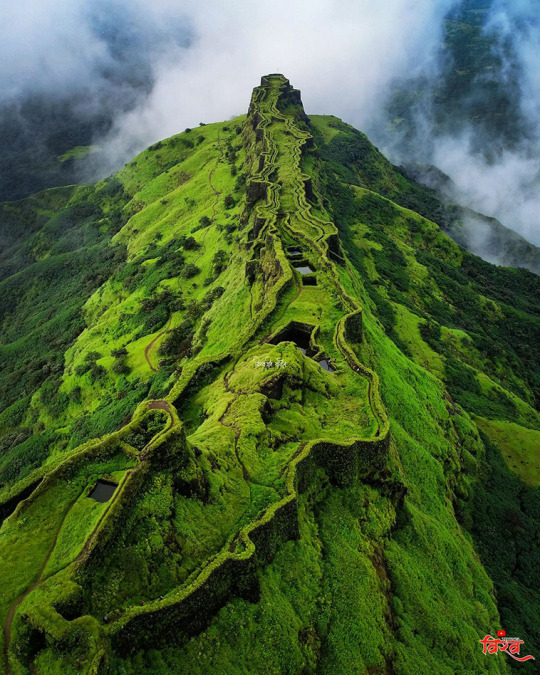
vishwajeetsalunkhe_photography
The Raigad Fort: Massive Fort 1,356 m Above Sea Level
Situated in the Raigad district of Maharashtra, India, the Raigad Fort (meaning Royal Fort) once was the capital of the Maratha Empire. Construction of several structures on the fort took place after Chhatrapati Shivaji made it his capital in 1662. There were about 300 stone houses, mansions, palaces garrisons, and a market which was a mile long on the fort. The fort also had decorative gardens, pillars, pathways, and water reservoirs.
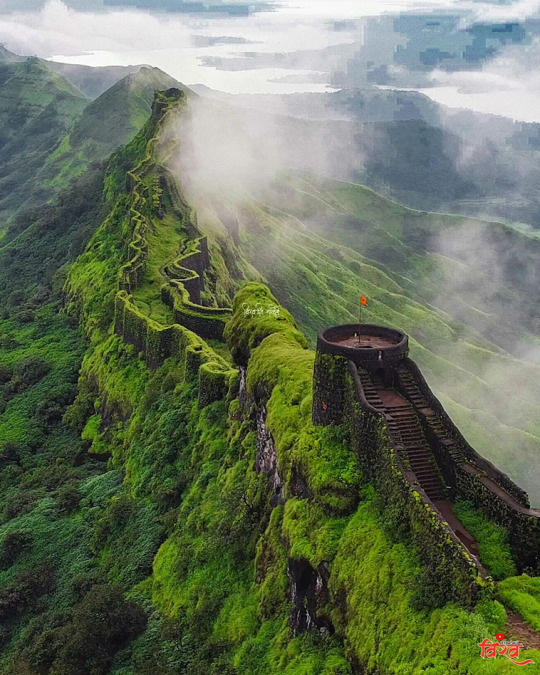
vishwajeetsalunkhe_photography
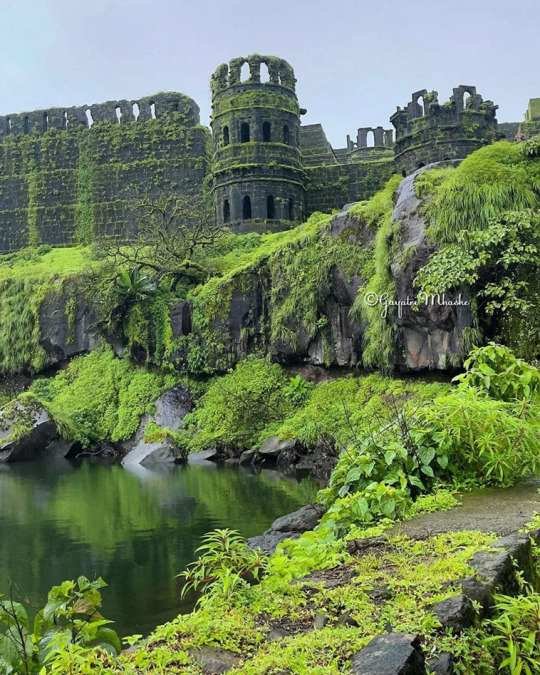
imgayatrimantra
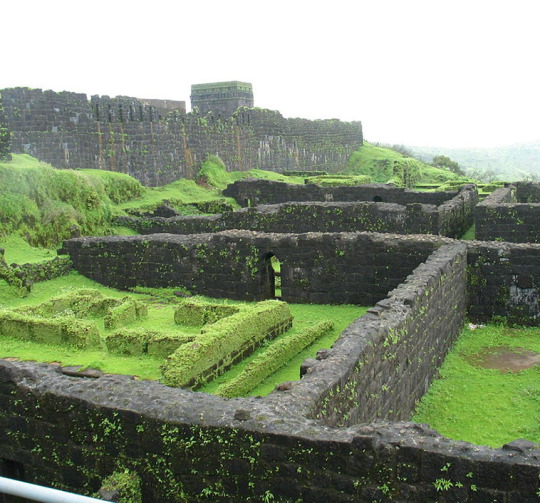
en.wikipedia.org
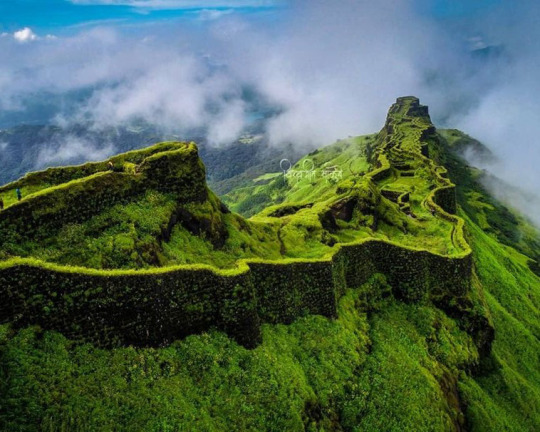
vishwajeetsalunkhe_photography
#vishwageetsalunkhe_ photography#photographer#raigad fort#fort#raigad district#maharashtra#india#royal fort#maratha empire#architecture#history#chhatrapati shivaji#imgayatrimantra#en.wikipedia.org
23 notes
·
View notes
Text
MODERN HISTORY
2ND BLOG _ The Indus Valley Civilization / HISTORICAL EVENT
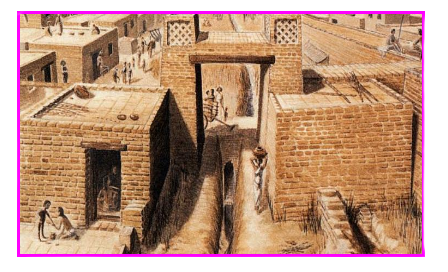
The Indus Valley Civilization was one of the oldest urban civilizations, dating from 2500 BC to 1500 BC. Although research is still being done on how they handled the issue of water conservation in this interesting part of the world, some advanced water conservation and management practices can be named. In fact, the covered drains that run under the streets of the ruins of Mohenjodaro and Harappa show that their inhabitants were well versed in hygiene. The relevance that exists in relation to the problems of excessive water consumption and the events that occurred within this civilization are interestingly compatible, since at this point in the blog is where my theory is that in ancient times, water consumption was not as excessive as it is today, the reasons for this is not only because there was less population at that time, but because people knew how to distribute and appreciate the resources provided by the earth and they respected it very much.
The Indus Valley Civilization, which flourished along the banks of the Indus River and other parts of western and northern India about 5,000 years ago, had one of the most sophisticated urban water supply and sanitation systems in the world. Ruins such as Mohenjo-Daro in Sindh and Dholavira in Gujarat had settlements with some of the most sophisticated sanitation systems in the ancient world. They included drainage canals, rainwater harvesting, and street sewers. Sewage was disposed of through underground drains built with precisely laid bricks, and an elaborate water management system with numerous reservoirs was established. In the drainage systems, the drains from the houses were connected to the wider public drains laid along the main streets. The drains had holes at regular intervals for cleaning and inspection. Water from bathrooms on the roofs and upper floors was carried through closed terracotta pipes or open chutes that emptied into the street drains.
Some of the cities of this civilization contributed in a certain way to the conservation of water, since they had their own irrigation systems that allowed the conservation of water in a better way. These cities are the following:
Dholavira: One of the oldest water´s harvesting systems is located about 130 km from Pune along Naneghat in the Western Ghats. A large number of cisterns were carved into the rocks to provide drinking water to the traders who traveled along this ancient trade route. Each fort in the area had its own water harvesting and storage system in the form of rock-cut cisterns, ponds, tanks and wells, which are still in use today. A large number of forts like Raigad had tanks that supplied water.
Western Rajasthan: In ancient times, houses in parts of western Rajasthan were built so that each had a water harvesting system on the roof. Rainwater from these roofs was channeled into underground tanks. This system can still be seen today in all the forts, palaces and houses of the region.
Jodhpur: The old city of Jodhpur has over 200 stepwells, built from around the 6th century as part of an incredibly sophisticated water architecture," he explains. During the little rain the region receives between June and September, water is diverted from canals built on the hilly outskirts of the city to man-made tanks, or talabs.
In addition, one of the main figures in water conservation in this civilization were the engineers and urban planners, who were in charge of drainage systems and so on. They were known to have extensive knowledge on how to conserve water.
The results obtained by this civilization in terms of water conservation are the different implementations they gave to water conservation related to the system they had to maintain cleanliness at the time of using the water resource. The effects they had on the future plans of water conservation are mainly positive, since it is well known that this civilization was an intelligent and organized one, that knew how to control its resources very well and how to improve day by day, but above all, to do it in peace with the environment.
If we want to go deeper into this topic of the Indus civilization and water conservation, let's make a connection with the present time. Actually, water conservation is so important especially in environmental topics that are given in schools or in those talks that are given in any convention, but the thing here is that how could it be possible? Well, the answer is because of the ancient civilization that paved the way for us and made it easier for us to continue to practice water conservation today.
To finish this blog, let's review everything about this historical event, basically the Indus Valley civilization makes it easier for actual people to organize well water and not make such a mistake when we have to preserve it in the right way. If we start to become aware of this whole problem and start to organize our resources in the best possible way like this civilization did, we can probably improve all over the world with this issue of conniving water for a better change in general.

14 notes
·
View notes
Text
7 Epic Heroic Stories of Chhatrapati Shivaji Maharaj
chhatrapati Shivaji Maharaj is one of India’s most revered historical figures, known for his military genius, visionary leadership, and commitment to the cause of Swarajya (self-rule). Born in a time of political instability and foreign rule, Shivaji Maharaj’s rise to power marked the beginning of a new era in Indian history. His life is a testament to the power of determination, strategy, and governance. In this comprehensive exploration, we will delve into his early life, military accomplishments, governance, family, and the lasting legacy of Chhatrapati Shivaji Maharaj.
Chhatrapati Shivaji Maharaj was born on February 19, 1630, at Shivneri Fort in the Pune district of Maharashtra.and dead in 3 April 1680 (age 50 years), Fort Raigad.
1. Birth and Family Tree of Chhatrapati Shivaji Maharaj
Chhatrapati Shivaji Maharaj was born on February 19, 1630, at Shivneri Fort in the Pune district of Maharashtra. His birth took place in a time when the region was under the rule of the Bijapur Sultanate, and India was largely dominated by foreign powers, including the Mughals, the Portuguese, and other regional Sultanates. His birth at Shivneri, a well-protected fort, was seen as auspicious, and it is said that his mother, Jijabai, prayed to the goddess Bhavani for a son who would bring glory to his people.
Bijapur Sultanate map
Shivaji Maharaj was born into the Bhosale dynasty, which belonged to the Maratha clan. His father, Shahaji Bhosale, was a general who served the Bijapur Sultanate, while his mother, Jijabai, was a deeply religious and patriotic woman. Shahaji was a skilled warrior and administrator who held jagirs (landholdings) in Pune and Bengaluru. However, due to the political alliances he had with various Sultanates, he was often away from his family, leaving Jijabai to play a major role in raising young Shivaji.
Jijabai Bhosale was affectionately called as Rajmata. She was a strong warrior and a fierce matriarch who had a major role in shaping the Maratha empire.
18 March 1594 – 23 January 1664) was a 17th century Indian military leader who served the Ahmadnagar Sultanate, the Bijapur Sultanate, and the Mughal Empire at various points in his career
Jijabai’s influence on Shivaji Maharaj was immense. She nurtured him with stories of great Hindu epics like the Ramayan and the Mahabharata, instilling in him a sense of duty and justice. This early exposure to stories of heroism and righteousness shaped Shivaji’s character, fueling his determination to establish Swarajya—a kingdom free from foreign rule.
1 note
·
View note
Text
The Best Activities for Adventure Seekers at Diveagar Beach
If you rate the beaches in the Konkan region, then Diveagar Beach is among the top five beaches. Situated at a distance of 170 kilometers from Mumbai in the Raigad district, this beach is a perfect representation of the natural beauty of the Konkan region.
Diveagar Beach is an amalgamation of greenery and clean water. The smooth, white sand is another unique aspect of the beach.
However, you must not forget that this beach doesn’t have a flat surface. Instead, it has wavy shores and strong tides from the Arabian Sea.
It makes this beach an ideal setting for sea surfing.
Diveagar Beach is a perfect weekend getaway for beach holidays. It is the reason, not only from nearby cities like Mumbai and Pune, but from other cities also many people visit this beach.
To know about various activities happening on this beach, you need to read about it. Let’s learn about Adventure Activities Diveagar Beach in this blog.
Water Sports Galore
Diveagar Beach is famous for various water sports activities. If you are a sports enthusiast, then this place is just ideal for you.
Whether it is surfing or parasailing, banana ride, or other sport, you get complete enjoyment and excitement.
You should grab the golden chance to take part in an array of water sports activities.
You can indulge in sports like seaside volleyball and different amusing games. There are many service providers that offer a variety of such activities in Diveagar.
All these activities are equally enjoyable for all age groups.
Normally, there are three-days packages offered to tourists that bring a blend of thrill and fun. There is lodging provided in rooms on sharing basis.
Book a package for water sports activities today and let the adrenaline boost!
Beachside Camping and Bonfire Experiences
You want the best fun and entertainment when vacation season is around the corner. You should grab every opportunity to have a fun time with your friends and family. We know that when family camps together, it stays together. It is because you get sufficient time to know each other while they camp.
Camping takes away you from the boring and monotonous routine.
You can join any service provider that offers family beachside camping trips. It is a 2-days program that will certainly disconnect you from the daily chaos.
There is a long list of activities offered on these camping trips, e.g., tent pitching, campfire, stargazing, and barbecue.
In the daytime, you can choose short hikes and nature trails.
It is guaranteed that the two days you spend there will give you loads of memories.
Trekking and Nature Trails
Diveagar is close to two big cities in Maharashtra, Mumbai and Pune. It is the reason; this is one of the most-favored beach spots. Due to good connectivity and better opportunities of spending time with friends and family, Diveagar is a hotspot.
You can make the most of your vacation by booking tickets after checking the best time to visit Diveagar.
There are many ancient and religious places near Diveagar that can be added to your itinerary.
If you are fond of trekking, then Kondivali Beach is a great place. Not only thrilling water sports, but many adventure activities such as, surfing and paragliding are also available there.
Shrivardhan cliffs are close by, so you can go trekking as well.
There is a road beside the beach, hence, Kondvali Beach is ideal for a beach drive.
You can book a resort in Diveagar that gives all types of facilities along with trekking and nature trails.
Exploring Historical Sites and Forts
If you are an admirer of history, then you must go to Janjira and Bankot Forts. Janjira is an island fort. It is situated underwater between the Rajapuri Jetty off Murud.
It is a marvel of architecture, which has walls surrounding it, 40 feet high and strong.
The fort is spread over 22 acres and has 19 towers and several turrets. Some of them are still intact.
Now in ruins, the fort was a proper living fort with all the required facilities, like palaces, officers, mosques, freshwater tanks, etc.
To reach Janjira from Diveagar, one has to go first to Dighi port which is 17 kilometers away from Diveagar.
Another famous historical place is Bankot Fort. It is around four kilometers away from Diveagar.
The fort was captured by the Portuguese from Adil Shah in 1545 and was later acquired by Marathas. Another name for this fort is Himmat Garh.
Group Activities and Team Building
Since Diveagar is located at a convenient distance from Mumbai and there are many good accommodations, this place is liked by corporates and other training institutes for organizing three days residential training programs, get-togethers, and team building activities.
Service providers design programs in such a manner that team members learn management concepts and team building activities in group activities.
Diveagar Beach offers many exciting activities also. Thus, it becomes easy to incorporate them into these team-building programs.
Places like exotica resort Diveagar are always booked by corporate houses. There all types of facilities are provided.
Konkan coastline brings an array of picturesque beaches where you can spend great holidays. Among them, Diveagar Beach is a prominent one.
It stretches across a length of 5 kilometers. The entire stretch is covered with beautiful palm, Beatles, and casuarina trees.
Not only amazing natural beauty, but various adventure activities are also available at Diveagar Beach. It makes this place ideal for people of all age groups.
In the morning, one can have fun in the water with your family.
In the evening, one can have a stroll along the Frothy Sea and watch the sun setting in the west.
Evening time is also ideal for buggy rides.
It is possible to stay in some good beach resorts located on the beach.
Diveagar Beach is the right place where tourists to a memorable and tranquil beach vacation along with a comfy stay.
It is a beach that serves good opportunity for adventure seekers.
0 notes
Text
New Findings in Pune Archives Confirm Mirgad and Songiri Forts are Distinct Structures
Pune, 27th August 2024: Until now, it was believed that Mirgad in Pen Taluka of Raigad District was Songiri. This belief has now been proven to be completely false, as Songiri and Mirgad are two different forts. This conclusion is supported by documents in Modi script found in the Peshwa Office archives in Pune. History researcher Raj Memane conducted thorough research that uncovered this…
0 notes
Text
BEACH RESORT IN ALIBAUG
If you’re dreaming of a coastal escape where the sound of waves meets the gentle rustling of palm trees, Alibaug in Raigad district should be on your radar. Just a few hours away from Mumbai, this picturesque beach town offers an array of beach resorts that cater to those seeking relaxation and adventure. With its serene ambiance, historical charm, and pristine beaches, Alibaug is the perfect destination for a rejuvenating getaway. In this blog, we’ll explore some of the best beach resorts in Alibaug, Raigad that promise to make your stay memorable.
1. Radisson Blu Resort & Spa Alibaug
For those who seek a blend of luxury and coastal charm, the Radisson Blu Resort & Spa in Alibaug is a top choice. Situated amidst lush greenery and close to the serene Mandwa Beach, this resort combines elegance with comfort. The resort features spacious, well-appointed rooms and villas with private balconies, offering stunning views of the lush surroundings.
Guests can indulge in the resort’s spa treatments, swim in the expansive pool, or savor delectable dishes at the on-site restaurant. The resort’s proximity to Mandwa Beach makes it a convenient base for beachside relaxation and exploration.
2. The Fern Silvanus Resort
The Fern Silvanus Resort offers a refreshing retreat with its blend of natural beauty and modern amenities. Located near Alibaug’s popular beaches, this resort provides a tranquil environment perfect for unwinding. The resort’s rooms and cottages are designed with a focus on comfort and aesthetics, featuring contemporary decor and lush garden views.
The Fern Silvanus Resort boasts a beautiful pool area, an on-site restaurant serving a variety of cuisines, and well-maintained gardens for leisurely strolls. Its strategic location makes it easy to explore nearby beaches and local attractions.
3. Chetan Beach Resort
For a more homely and budget-friendly option, Chetan Beach Resort offers a cozy escape with a touch of local charm. Situated close to Alibaug Beach, this resort provides comfortable accommodations with easy access to the sandy shores and local eateries. The simplicity and warmth of the resort make it an appealing choice for families and solo travelers alike.
Guests can enjoy the resort’s laid-back atmosphere, take leisurely walks on the beach, or explore the local market. Chetan Beach Resort provides a no-frills, yet satisfying beach getaway experience.
4. Aawas Beach Resort
Aawas Beach Resort is known for its serene setting and intimate atmosphere. Nestled amidst greenery and located near Alibaug’s pristine beaches, this resort offers a peaceful retreat from the hustle and bustle of city life. The resort features comfortable cottages and rooms designed to blend with the natural surroundings.
Guests can enjoy the resort’s cozy ambience, explore nearby beaches, or simply relax in the lush gardens. Aawas Beach Resort is ideal for those seeking a quiet and rejuvenating escape.
5. Mango Beach House
Mango Beach House provides a homely and relaxed vibe, making it a great choice for families and groups. Located close to the beach, this resort offers spacious accommodations with a focus on comfort and practicality. The resort’s direct access to the beach allows guests to enjoy leisurely walks, beach games, and picnics.
The friendly staff and personalized service at Mango Beach House contribute to a welcoming atmosphere, making it an excellent choice for a laid-back beach vacation.
Activities and Attractions
While the beach resorts offer luxurious and comfortable stays, Alibaug has much more to offer. Explore the historic Alibaug Fort, a testament to the town’s rich history. Take a boat ride to Kolaba Fort or indulge in water sports at nearby beaches like Kashid Beach and Nagaon Beach. For nature lovers, the lush landscapes and scenic views around Alibaug provide ample opportunities for exploration and relaxation.
Conclusion
Alibaug, Raigad is a coastal gem that offers a diverse range of beach resorts, each catering to different tastes and preferences. From luxurious retreats to cozy getaways, these resorts provide the perfect base for exploring Alibaug’s beautiful beaches and attractions. So pack your bags, head to this serene coastal haven, and immerse yourself in the sun, sand, and tranquility that Alibaug has to offer.
1 note
·
View note
Text
Alibaug – history and significance

Bordered by the Arabian Sea, Alibaug is a coastal town lying in the Raigad District. It is known for its palatial sea forts, local fish delicacies and the virgin, sun-kissed beaches. A trip to Alibaug is the ideal weekend getaway from the hustle-bustle of cosmopolitan lives. Located just 95.3 km from Mumbai, Alibaug can be reached by NH 66 in about 2 hours. Alibaug is home to tranquil waters and sun-kissed beaches. The town can also be reached by ferry from Mumbai and is a perfect tourist spot for both young and old.

Alibaug and its surrounding villages are the historic hinterlands of Bene Israeli Jews. There is a synagogue in the “Israel Ali” (Marathi meaning Israel lane) area of the town. A Bene Israelite named Ali used to live there at that time. He was a rich man and owned many plantations of mangoes and coconuts in his gardens. Hence the locals used to call the place “Alichi Bagh”(Marathi for “Ali’s Garden”), or simply “Alibaug”.

The journey to Alibaug is an exciting one. You can enjoy a scenic drive by road, spacious one by rail or a quick and fun one by seas. One can reach Alibaug via Pen (30 km), located on the Mumbai-Goa Road. If you are travelling from Mumbai, you can reach Alibaug by NH 17. The distance is approximately 95.3 km from Mumbai. The nearest railway station is located at Pen. The railway station is connected to Panvel in Mumbai through the Central Railway station. One can then reach Alibaug by local transport (buses, taxis, auto-rickshaws). The nearest jetty is located at Mandawa from where ferry services are available to the Gateway of India. Another port around Alibaug is in the district of Rewas. Visit Isprava to read more.
0 notes
Text
Raigad heritage walk
15-16 June 2024, Saturday-Sunday (overnight stay).

We were around 24 friends.
This blog post is divided as follows:
Experience in photos.
How did we go?
Time frame.
Expenses.
EXPERIENCE IN PHOTOS:
Our cozy home stay


Ride in the cable car.

























This trip was arranged by my good friend and we were glad to be a part of his family and friends. Mr. RP & Mr. S were the expert historians whose storytelling raised goosebumps and brought tears in our eyes. They literally created history live in front of us at the fort. Raigad was alive and spoke with us, its untold secrets and stories. My blog post may have everything, but this experience of Raigad through the stories of our story teller friends.
While returning, our car did not start and we all cramped up ourselves in the tempo traveler. I must thank all the parents and their kids who adjusted to accomodate the car passengers, at the expense of their own comfort.
But apart from this small hiccup, the rest of the trip was just fantastic and I look forward to traveling again.
HOW DID WE GO?
We had hired an AC tempo traveller and an AC 7-seater car.
Base village: Hirakaniwadi in Pachad.
Pick up: Mumbai.
Drop: Mumbai.
Route: Mumbai > Pachad > Cable car from Pachahd to Raigad top abd back > Walk on Raigad fort > return home by hired vehicles to Mumbai.
TIME FRAME:
15-06-2024, Saturday.
15:10 leave home.
15:45 board the car.
22:30 reach base village.
16-06-2024, Sunday.
01:30 sleep
07:00 wake up
07:30-08:30 breakfast
09:30 - 09:33 cable car ride
10:00 - 18:00 explore the fort
20:00 back to base village
22:00 return journey starts
17-06-2024, Monday.
04:30 reach home
EXPENSES:
Travel, food and stay were commonly shared.
Exclusion: cable car (Rs. 310/- return fare for adult & Rs. 200/- return fare for senior citizen). Online booking if the cable car is preferred, to avoid the mad rush to book the tickets at the counter. There will be 2-3 hours waiting time for even those who have booked online.
TOTAL: INR 2000/- per head.

Did you notice the arc in the sky against those clouds? My first one for this rainy season's!

Sun halo: notice the red is INSIDE as opposed to a rainbow, whose red is OUTSIDE.
1 note
·
View note
Text
Best Landscapes to Admire from the Deccan Odyssey Train
Embark on a journey full of luxury and excitement on the Deccan Odyssey train as it travels through the beautiful scenery of India. Visit the imposing Western Ghats, unspoiled beaches of Goa as well as the historical splendors of Hampi; each offers a feast for the eye. Join us as we virtually tour the diverse and enthralling landscapes one can view from the windows of the Deccan Odyssey.
Western Ghats: The Journey Through a Verdant Wonderland
A tapestry of lush forests, cascading waterfalls, and mist-covered peaks welcome you to the Western Ghats, a UNESCO World Heritage Site section.
While traversing the state of Maharashtra, travelers are treated to spectacular views of the Ghats, hence, affording them an opportunity to observe the rich biodiversity they teem with.
Along the route, such as the Bhima Shankar Wildlife Sanctuary and the Koyna Wildlife Sanctuary, explore some great places where you can find biodiversity hotspots and national parks.
Konkan Coast: Where the Sea Meets the Land
When walking along the Konkan coast you will see beaches with golden sand and palms growing here and there, all swaying softly and the water is crystal-clear.
Travelers can enjoy the quaint appeal of coastal villages and observe traditional fishing communities in operation.
Major attractions include the scenic beaches of Ratnagiri, Ganpatipule, and Tarkarli which are famous for their natural beauty and peaceful atmosphere.
Ajanta and Ellora Caves: A Glimpse into India's Rich Cultural Heritage
The train journey to Aurangabad offers views of the rugged terrain of Maharashtra, interspersed with fertile valleys and rocky outcrops.
On coming to Aurangabad, travelers can explore Ajanta and Ellora caves, a UNESCO World Heritage Site, and be astonished by the simple beauty of rock-cut buildings of ancient times and the most complex statues.
Dating to the 2nd century BCE, these caves exhibit creations resembling art pieces from Buddhist, Hindu, and Jain traditions thereby offering an idea of India’s cultural heritage.
Maharashtra Countryside: Rolling Hills and Verdant Valleys
Passengers can relish scenes of rolling hills, lush valleys, and meandering rivers while traveling through Maharashtra.
Traditional farming practices continue to thrive in many charming villages throughout the countryside.
Places like the vineyards of Nashik, the hill stations like Matheran and Mahabaleshwar, and historical forts (Raigad, Shivneri) is a key attraction in the state.
Goa Beaches: Sun, Sand, and Serenity
The journey to Goa unfolds a panorama of palm-fringed beaches, turquoise waters, and colonial-era architecture.
When you travel to Goa, you will see the stunning scenery of beaches with palm trees, blue water, and historic colonial buildings.
Tourists can relax on the beautiful beaches in Calangute, Baga, and Anjuna, or explore the bustling markets and old Portuguese churches in old Goa.
Goa’s beach vibe and picturesque landscapes offer travelers a chill and a pleasant atmosphere.
Hampi Ruins: A Journey Back in Time
When the train travels in Karnataka state, passengers observe a remarkable mixture of ancient ruins, massive rocks littered around hilly terrains, and green plantations of bananas.
Passengers can explore the UNESCO Heritage Sites like Hampi ruins, including the iconic Virupaksha Temple, Vijaya Vittala Temple, and Lotus Mahal.
Hampi’s captivating scenery and rich historical significance make it a famous destination for both historical and natural lovers.
Bijapur Fort: A Monumental Marvel
Passengers traveling to Bijapur can view the impressive Gol Gumbaz, one of the largest domes globally, and the magnificent Bijapur Fort.
The vast plains around Bijapur, scattered with historical sites and ancient mosques, form a well-known area in Bijapur.
Observing the various architectural marvels in Bijapur, like Ibrahim Rauza and Jod Gumbaz, provides a glimpse of the area’s rich history.
Conclusion:
Taking a trip on the Deccan Odyssey is more than simply riding on a train; it is traveling across India’s ecological and historical treasures. From the foggy mountains of the Western Ghats to the sunny shores of Goa and the historic remnants of Hampi, says something about India’s varied and lively fabric. If you are a nature lover, a history buff, or someone who just loves to have an adventure, then the Deccan Odyssey train is an exceptional way for you to see and explore India’s breathtaking scenery.
#deccan odyssey#deccan odyssey train#deccan odyssey express#deccan odyssey fare#deccan odyssey deaprture#deccan odyssey schedule#deccan odyssey train route#deccan odyssey route#deccan odyssey price#deccan odyssey train price
1 note
·
View note
Text
Conquer the Heights: Trekking to Majestic Forts Around the World
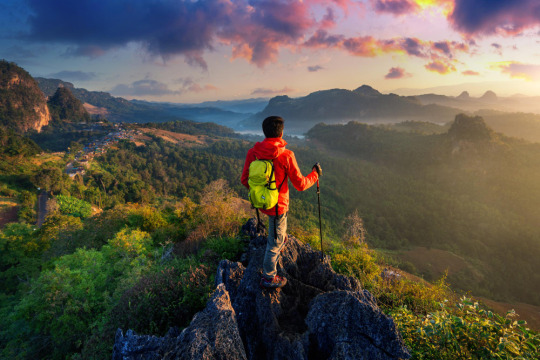
In the heart of rugged landscapes and atop towering cliffs lie some of the world's most majestic forts, standing as silent sentinels to bygone eras of conquest and defense. For adventurers seeking a blend of history, culture, and adrenaline-pumping exploration, trekking to these ancient fortresses offers a unique and unforgettable experience.
From the sprawling fortresses of Europe to the remote citadels of Asia, fort trekking opens a gateway to the past, where every step taken echoes with the whispers of history. Imagine tracing the footsteps of medieval warriors or scaling the walls that once guarded empires. It's an immersive journey that not only tests physical endurance but also nourishes the soul with tales of valor and intrigue.
Exploring European Strongholds
Europe, with its rich tapestry of history, boasts an impressive array of forts and castles nestled amidst breathtaking landscapes. Trekking through the misty highlands of Scotland to reach the haunting ruins of Dunnottar Castle, perched dramatically atop sheer cliffs, is a journey back in time. The rugged terrain only enhances the sense of adventure as travelers traverse ancient paths once trodden by knights and kings.
Further south, the majestic fortresses of the Rhine Valley in Germany stand as imposing guardians of the river's winding course. Trekking along the Rhine's banks, with castles like Marksburg and Rheinfels looming overhead, evokes a sense of awe at the strategic importance these forts once held in shaping the region's tumultuous history.
Venturing into the Asian Frontier
Across Asia, fort trekking offers a glimpse into the continent's diverse cultural heritage and architectural splendor. In India, the formidable forts of Rajasthan rise like mirages from the desert sands, their towering ramparts bearing witness to centuries of conquest and rule. Trekking to the likes of Kumbhalgarh or Mehrangarh Fort not only rewards adventurers with panoramic views but also immerses them in the vibrant tapestry of Rajputana history. Moreover, forts in India are not limited to Rajasthan; the country is dotted with numerous other historical fortresses, each with its own stories to tell and adventures to offer. Whether exploring the majestic forts of Maharashtra like Raigad Fort or venturing to the ancient hill forts of Karnataka such as Chitradurga Fort, fort trekking in India promises an enriching and unforgettable experience.
In Nepal, the ancient hill forts of the Kathmandu Valley beckon intrepid travelers to explore their hidden depths. Trekking along ancient trade routes, with forts like Nuwakot and Gorkha Durbar perched atop verdant hills, offers a glimpse into the strategic importance these strongholds once held in shaping the region's geopolitical landscape.
Preparing for the Adventure
While the allure of fort trekking is undeniable, proper preparation is key to ensuring a safe and rewarding experience. Before embarking on any trek, it's essential to research the chosen route, including trail conditions, weather patterns, and any necessary permits or permissions required.
Equally important is ensuring physical fitness and carrying the right gear, including sturdy hiking boots, weather-appropriate clothing, and sufficient food and water supplies. Depending on the trek's difficulty and duration, it may also be advisable to enlist the services of a knowledgeable guide or join a trekking group for added safety and camaraderie.
Conclusion
Trekking to majestic forts around the world is more than just a physical challenge; it's a journey through time, culture, and adventure. Whether scaling the ramparts of European castles, traversing the rugged landscapes of Asia's hill forts, or exploring the hidden gems of forts near me, each step taken brings travelers closer to the rich tapestry of human history. So, pack your bags, lace up your boots, and embark on a quest to conquer the heights and uncover the secrets of these ancient fortresses that have stood the test of time.
1 note
·
View note
Text
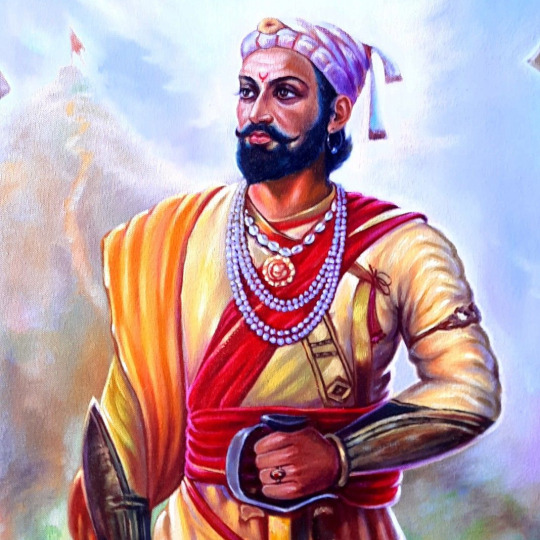
🚀 Honoring the birth anniversary of the legendary Chhatrapati Shivaji Maharaj! 🚀
His legacy of resilience, integrity, and fortitude reverberates through time, reminding us to stand tall against adversity and uphold righteousness. Let's commemorate the spirit of Shivaji Maharaj and strive to emulate his noble ideals.
#shivajimaharaj #maharashtra #shivaji #marathi #maharaj #maratha #chatrapati #sahyadri #pune #shivajimaharajhistory #ig #india #sambhajimaharaj #mumbai #marathaempire #shivajiraje #jayshivray #chhatrapati #chatrapatishivajimaharaj #swarajya #raje #desha #history #clickers #raigad #swarajyarakshaksambhaji #hindu #forts #shivray #fort #ShivajiJayanti #CourageousLeader #Inspiration 🙏🏽🚩
0 notes
Text




#Maharashtra's cultural heritage shines through at Aurangabad's #BibiKaMaqbara, reminiscent of the Taj Mahal. The serene #beaches of Alibaug and Ganpatipule attract beach lovers, while the historic #forts of #Raigad and Pratapgad appeal to history enthusiasts.
#tour operator in delhi#travel agent in delhi#golden triangle package#travel agency in india#travel agency in delhi#travel agents in delhi#maharashtra tour package
1 note
·
View note
Text
7 Best Historical Sites In Maharashtra
Maharashtra, steeped in history, boasts a treasure trove of historical sites. The UNESCO-listed Ajanta and Ellora Caves showcase ancient rock-cut marvels, while the imposing Raigad Fort echoes Maratha grandeur. Mumbai's Gateway of India stands as an iconic symbol, and Chhatrapati Shivaji Terminus blends Victorian and Indian architecture seamlessly. Explore the Bibi Ka Maqbara's Mughal splendor in Aurangabad, and delve into Pune's Shaniwar Wada, a historical fortress. Pratapgad and Kolaba Fort add to the historical charm. historical sites in Maharashtra promise a captivating journey through time, unveiling the rich heritage and architectural splendors of this vibrant Indian state
0 notes
Text
Chhatrapati Shivaji Maharaj's Demise: Unraveling the Enigma
Table of Contents 1. Introduction 2. Chhatrapati Shivaji Maharaj's Last Days 3. The Veil of Uncertainty 4. Theories Surrounding the Death 5. Legacy and Impact 6. Exploring Further at My History 7. Conclusion Introduction Chhatrapati Shivaji Maharaj, the illustrious Maratha king, left an indelible mark on Indian history. Despite his remarkable accomplishments, the circumstances surrounding his How Did Chhatrapati Shivaji Maharaj Died remain shrouded in mystery. In this article, we delve into the final days of Shivaji Maharaj and the lingering questions surrounding his death.
Chhatrapati Shivaji Maharaj's Last Days In the twilight of his life, Chhatrapati Shivaji Maharaj faced health challenges that eventually led to his demise. The Raigad Fort served as the backdrop for the final chapter of his life, where he breathed his last on April 3, 1680.
The Veil of Uncertainty The historical accounts of Shivaji Maharaj's death provide a narrative marked by uncertainty. While it is acknowledged that his health was in decline, the exact details of his passing are elusive. The lack of a clear historical record has given rise to numerous speculations and theories.
Theories Surrounding the Death Several theories attempt to unravel the mystery behind Chhatrapati Shivaji Maharaj's death, each offering a unique perspective on the circumstances surrounding this historical event.
a. Natural Causes Some historians argue that Shivaji Maharaj succumbed to natural causes, attributing his death to prevalent health issues of the time, such as infectious diseases and epidemics.
b. Political Intrigues A prevalent theory suggests that political intrigues and internal conspiracies within the Maratha court might have played a role in Shivaji Maharaj's demise. The possibility of poisoning for political motives remains a tantalizing conjecture.
c. Health-Induced Despair Another hypothesis explores the idea that Chhatrapati Shivaji Maharaj, facing ailing health and the challenges of ruling, may have contemplated self-harm or even suicide.
Legacy and Impact Regardless of the ambiguity surrounding his death, Chhatrapati Shivaji Maharaj's legacy endures. His vision for Swarajya (self-rule), military strategies, and administrative reforms continue to influence the socio-cultural and political landscape of India.
Exploring Further at My History For more in-depth insights into historical mysteries and the lives of iconic figures, visit "My History." Dive into the rich tapestry of the past and uncover the stories that have shaped our present.
Conclusion Chhatrapati Shivaji Maharaj's death remains an enigma, inviting historians and enthusiasts to sift through the fragments of history for answers. As we reflect on his life and the mysteries surrounding his demise, the enduring legacy of Shivaji Maharaj serves as a beacon, inspiring curiosity and admiration for generations to come.
0 notes
Text
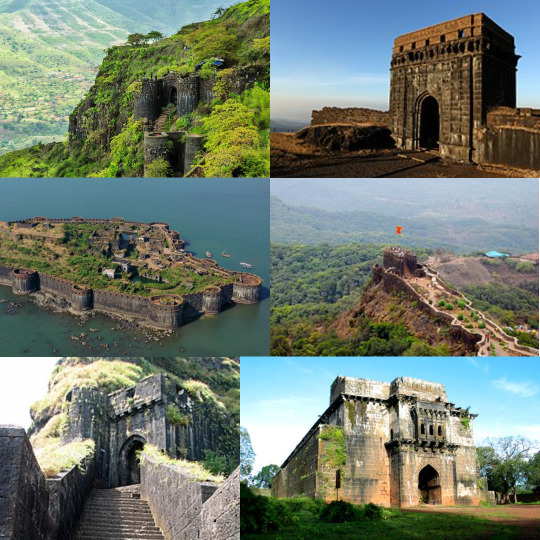
The Majestic Forts of Maharashtra: A Journey Through History and Nature.
Maharashtra, a state in Western India, boasts a rich and vibrant history, evident in its numerous forts scattered across the landscape. These forts, some dating back centuries, stand as testaments to the architectural prowess and strategic brilliance of past rulers. But beyond their historical significance, these forts offer a unique blend of adventure, natural beauty, and cultural immersion, making them a must-visit for any traveller to Maharashtra.
1. Raigad Fort: The Symbol of Maratha Glory.
Raigad Fort rises majestically atop a hill, overlooking the lush Konkan plains. This fort was the capital of the Maratha Empire under the legendary Shivaji Maharaj, and its ramparts still echo with the tales of his bravery and leadership. The fort boasts impressive structures like the queen's palace, the royal baths, and the samadhi (tomb) of Shivaji Maharaj. The view from the fort's summit is simply breathtaking, offering panoramic vistas of the surrounding countryside.
2. Shivneri Fort: Where Legends Began.
Shivneri Fort, located near Junnar, holds a special place in Maratha history. It was the birthplace of Shivaji Maharaj and served as the Marathas' early stronghold. The fort's rugged terrain and strategically designed defenses made it virtually impregnable, allowing Shivaji to plan his many successful campaigns. Today, the fort houses a museum dedicated to Shivaji's life and legacy, offering visitors a glimpse into the early days of the Maratha Empire.
3. Sinhagad Fort: A Site of Epic Battles.
Sinhagad Fort, also known as Kondhana, stands witness to one of the most iconic battles in Maratha history. In 1670, Tanaji Malusare, a loyal commander of Shivaji, led a daring attack on the strategically important fort, ultimately sacrificing his life to secure a Maratha victory. The fort's ramparts offer stunning views of the surrounding hills and valleys, and the Tanaji Malusare memorial stands as a tribute to his bravery.
4. Pratapgad Fort: Echoing with Echoes of Valor.
Pratapgad Fort, perched atop a hill near Satara, was another crucial Maratha stronghold. It was here that Shivaji Maharaj held his coronation ceremony in 1674, marking the formal establishment of the Maratha Empire. The fort is also known for the famous battle of Pratapgad, where Shivaji defeated the Mughal general Afzal Khan in a dramatic hand-to-hand combat. The fort's museum showcases artifacts and weapons from the Maratha era, offering visitors a deeper understanding of this period in history.
5. Lohagad Fort: A Trek Through Nature and History.
Lohagad Fort, located near Lonavala, offers a captivating blend of natural beauty and historical significance. The trek to the fort takes you through picturesque landscapes, offering stunning views of the surrounding valleys. The fort's ramparts provide a glimpse into its past, with remnants of water cisterns, caves, and temples still visible. Lohagad is a haven for trekkers and nature enthusiasts, offering an escape from the hustle and bustle of city life.
6. Janjira Fort: An Island Fortress Steeped in Mystique.
Janjira Fort, located off the coast of Murud, is an island fortress with a unique history. It was built by the Siddi dynasty in the 17th century and remained unconquered for over 350 years. The fort's formidable walls and strategic location made it virtually invincible, earning it the nickname "the impregnable fort." A visit to Janjira offers a glimpse into its maritime past and a unique experience of exploring a fort on an island.
7. Panhala Fort: A Hilltop Haven of Tranquility
Panhala Fort, nestled amidst the lush hills of Kolhapur, is a tranquil escape from the city life. The fort served as the capital of the Marathas for several years and was witness to numerous historical events. Its well-preserved structures, including palaces, temples, and gateways, offer a glimpse into the grandeur of the Maratha era. Panhala is also known for its scenic beauty and is a popular destination for trekking and camping.
This is just a glimpse into the vast and fascinating world of forts in Maharashtra. Each fort has its own unique story to tell, waiting to be explored. So, pack your bags, lace up your shoes, and embark on a journey through history and nature as you discover the majestic forts of Maharashtra.
#maharashtraforts#fortsofmaharashtra#fortsinindia#maharashtra#incredibleindia#historybuff#travelgram#wanderlust#adventureseeker#naturelover#family trips#tours#travel#travelling#couple tour#city tour#india#evokeholidays
1 note
·
View note
Text
Karnala Fort, situated in the Raigad district, boasts a different yet equally captivating history. Dating back to the 12th century, this fort has witnessed the rise and fall of various dynasties, including the Marathas and the Portuguese.
0 notes